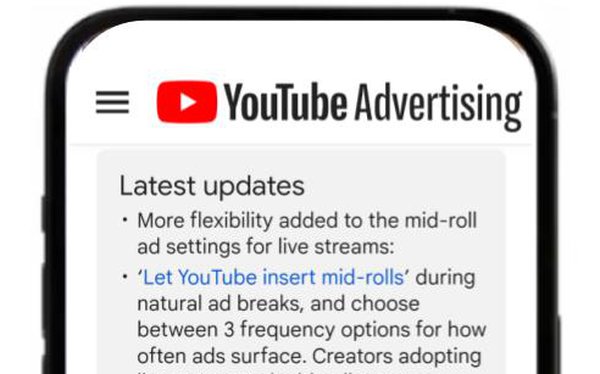by Colin Kirkland
Source: www.mediapost.com, August 2024
As the platform continues to swallow up more market share in livestreaming, YouTube is testing a new ad format for live video that might appear less disruptive to viewers. The company’s new picture-in-picture mid-roll ads will run alongside a livestream without halting the viewing experience.
“Some viewers on select devices will begin to see the new ad format in the coming months, allowing creators to run ads without disrupting the live stream,” YouTube posted in its “test features and experiments” blog.
Currently, those tuning into YouTube Live are taken away from the stream as the video stops for a full-screen ad, momentarily stopping the stream. But the new ad format in testing will allow viewers to continue watching live content without having to worry they’ll miss any update due to an ad break.
In effect, streamers will be able to generate revenue from these smaller screen ads, which are displayed on top of the ongoing stream.
Previously, the video-sharing app has been trying to address the issue of livestream disruption by testing mid-roll ads that included a countdown timer, better alerting viewers and streamers to prepare for the upcoming ad. The company also tried an option that allowed users to delay the ad, so creators could stop ads from popping up at inconvenient times.
However, smaller picture-in-picture ads would do away with the need for these prior solutions and introduce a way for streamers to potentially keep the attention of their audience.
According to YouTube, creators who have adopted live automated mid-roll ads have seen a more than 20% increase in in-stream ad revenue per hour. With the potential rollout of this ad type to more channels, YouTube may attract more streamers to enable ads.
YouTube Live is beginning to attract more viewership. A recent report shows the Amazon-owned streaming platform Twitch experiencing a decrease in overall viewership by almost 12% while YouTube showed a 20.5% increase over the last quarter.
In addition, while Twitch lost 10% of its market share in the second quarter compared to last year, YouTube increased its market share by 5%, possessing 23% total.

